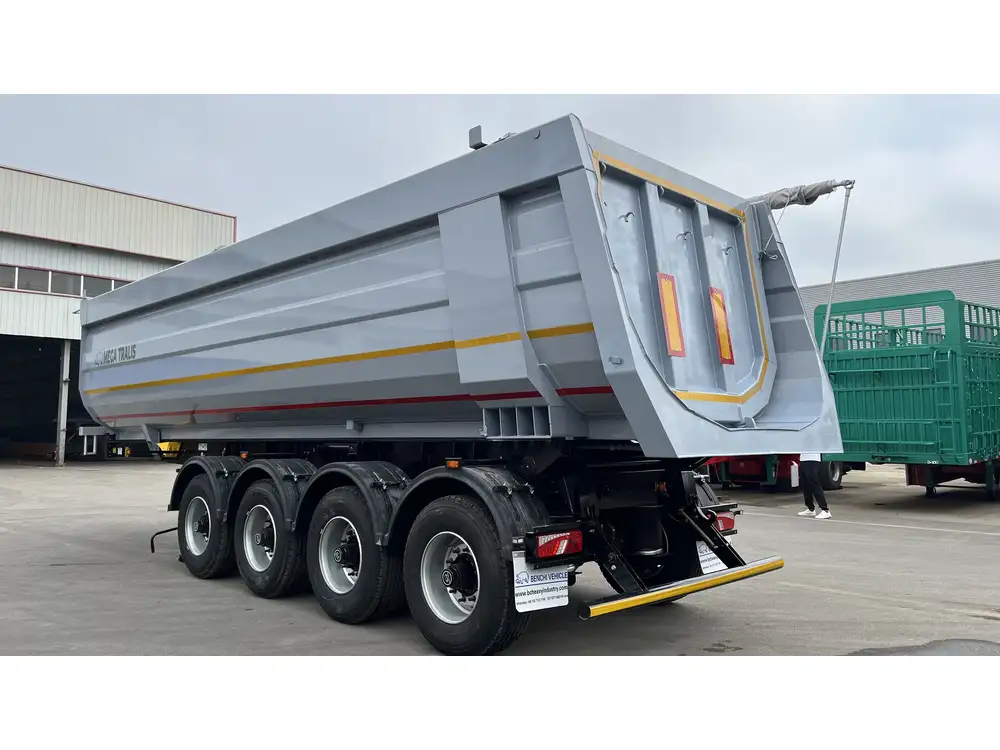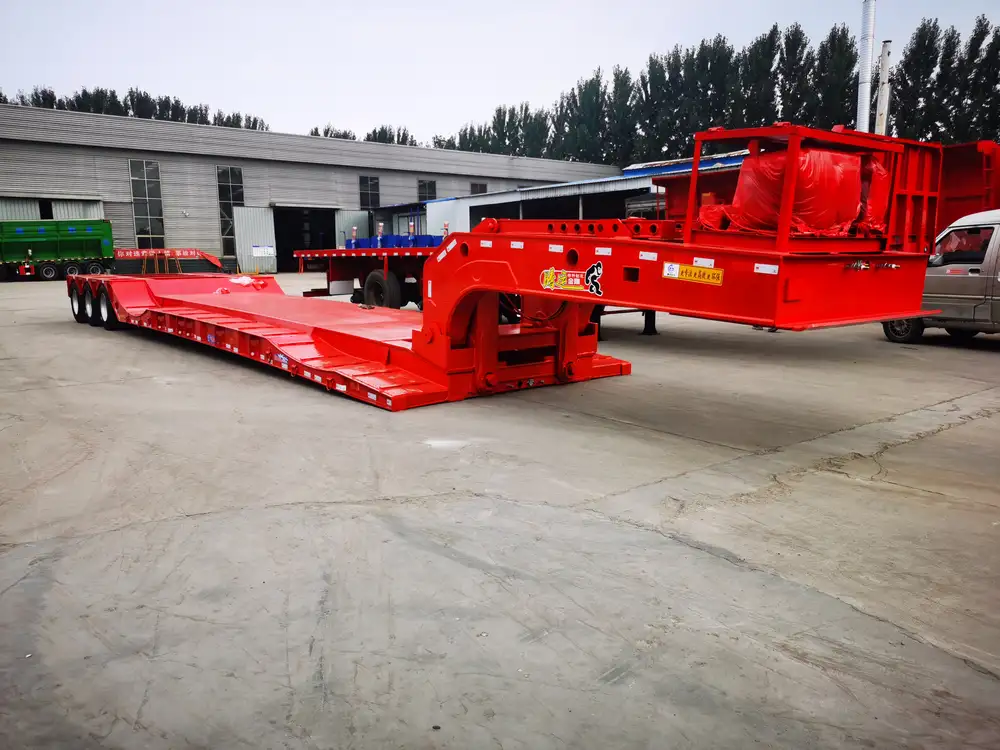In the evolving landscape of transportation and logistics, fuel efficiency and sustainability have become paramount. At CarMax Vehicle, we recognize the critical role that fuel choices play in the performance and environmental impact of semi-trailers. Two prominent alternatives to traditional diesel fuel are Compressed Natural Gas (CNG) and Liquefied Petroleum Gas (LPG). This comprehensive analysis delves into the distinct differences between CNG and LPG, providing insights to help fleet managers and operators make informed decisions.
Table of Contents
- Introduction to CNG and LPG
- Chemical Composition and Properties
- Energy Content and Efficiency
- Storage and Handling Requirements
- Environmental Impact and Emissions
- Cost Analysis and Economic Considerations
- Infrastructure and Availability
- Safety Considerations
- Performance in Semi-Trailer Applications
- Conclusion
- Frequently Asked Questions
Introduction to CNG and LPG
Compressed Natural Gas (CNG) and Liquefied Petroleum Gas (LPG) are two viable alternatives to diesel, each offering unique advantages and challenges for semi-trailer operations. Understanding their fundamental differences is essential for optimizing fleet performance, reducing operational costs, and minimizing environmental impact.

Chemical Composition and Properties
CNG: Compressed Natural Gas
CNG primarily consists of methane (CH₄), typically containing over 90% methane with small amounts of other hydrocarbons. It is stored under high pressure (200-250 bar) in specialized cylinders.
LPG: Liquefied Petroleum Gas
LPG is a mixture of propane (C₃H₈) and butane (C₄H₁₀) and is stored as a liquid under lower pressure (8-10 bar) compared to CNG. The exact composition can vary based on the source and intended use.
| Property | CNG | LPG |
|---|---|---|
| Primary Components | Methane (CH₄) | Propane (C₃H₈) & Butane (C₄H₁₀) |
| Storage Pressure | 200-250 bar | 8-10 bar |
| Physical State | Gas | Liquid |
| Energy Density | ~9.5 MJ/m³ (compressed) | ~25 MJ/L (liquid) |

Energy Content and Efficiency
CNG
CNG has a lower energy density per volume compared to LPG, necessitating larger or more pressurized storage tanks. However, it tends to offer better fuel efficiency in engines specifically optimized for natural gas.
LPG
LPG boasts a higher energy density per liter, allowing for more compact storage solutions. This translates to longer driving ranges without the need for frequent refueling, which is advantageous for long-haul operations.
| Fuel Type | Energy Density (MJ/L) | Energy Density (MJ/kg) | Typical Range Increase |
|---|---|---|---|
| CNG | 9.5 | 55 | Moderate |
| LPG | 25 | 46 | High |

Storage and Handling Requirements
CNG
Storing CNG requires robust, high-strength cylinders capable of withstanding high pressures. The infrastructure for CNG refueling is more specialized, often necessitating dedicated stations.
LPG
LPG storage is simpler due to its liquid state at lower pressures. Tanks are generally lighter and easier to install on semi-trailers, offering greater flexibility in storage configurations.

Environmental Impact and Emissions
CNG
CNG is renowned for its cleaner-burning properties, producing lower levels of carbon dioxide (CO₂), nitrogen oxides (NOₓ), and particulate matter compared to diesel. This contributes to reduced greenhouse gas emissions and improved air quality.
LPG
LPG also offers emission benefits over diesel, though not as pronounced as CNG. It emits less CO₂ and particulate matter but may produce higher amounts of other hydrocarbons depending on engine technology.
| Emission Type | CNG | LPG | Diesel |
|---|---|---|---|
| CO₂ | Lowest | Low | Highest |
| NOₓ | Low | Moderate | High |
| Particulate | Minimal | Low | Significant |
| Hydrocarbons | Lower | Higher | Higher |

Cost Analysis and Economic Considerations
Initial Investment
CNG systems typically involve higher upfront costs due to the need for high-pressure storage and specialized refueling infrastructure. In contrast, LPG systems may be less expensive to implement.
Operational Costs
CNG can offer lower fuel costs in regions where natural gas is abundant and affordable. LPG prices are generally higher, but the higher energy density can offset some cost differences by reducing the frequency of refueling.

Maintenance and Longevity
Both CNG and LPG engines can have similar maintenance requirements, though the simplicity of LPG systems may result in lower long-term maintenance costs.
Infrastructure and Availability
CNG Infrastructure
The availability of CNG refueling stations is growing but remains limited in many regions. This can constrain the operational flexibility of fleets relying solely on CNG.

LPG Infrastructure
LPG has a more established refueling network, making it more accessible for many operators. Its widespread availability supports greater adoption across diverse geographical areas.
Safety Considerations
CNG
CNG is non-toxic and non-corrosive but must be handled with care due to its high pressure. Proper ventilation and regular inspection of storage cylinders are essential to mitigate risks.

LPG
LPG is also non-toxic but is highly flammable. Safe handling practices, proper ventilation, and leak detection systems are critical to ensure safety in storage and use.
Performance in Semi-Trailer Applications
Engine Compatibility
Both CNG and LPG can be used in internal combustion engines with appropriate modifications. CNG engines often require more significant alterations due to higher compression ratios, whereas LPG systems can be more easily integrated into existing diesel engines.

Range and Refueling
LPG’s higher energy density typically provides a longer driving range between refuels, which is advantageous for long-haul operations. CNG may require more frequent refueling, but advancements in storage technology are continually improving its viability.
Payload Considerations
The storage system for CNG can add weight and reduce payload capacity due to the need for high-strength cylinders. LPG systems are lighter, allowing for a higher payload and better overall efficiency.
Conclusion
Choosing between CNG and LPG as alternative fuels for semi-trailers involves a multifaceted analysis of various factors, including energy density, storage requirements, environmental impact, cost, infrastructure availability, safety, and performance. At CarMax Vehicle, we understand that each fleet has unique needs and operational constraints. By carefully evaluating the differences between CNG and LPG, fleet managers can make strategic decisions that enhance efficiency, reduce costs, and contribute to a more sustainable future.

Frequently Asked Questions
1. Which is more cost-effective for long-haul semi-trailers, CNG or LPG?
LPG generally offers higher energy density, which can be more cost-effective for long-haul operations by reducing the frequency of refueling. However, the overall cost-effectiveness depends on local fuel prices and infrastructure availability.
2. How do CNG and LPG compare in terms of environmental benefits?
CNG typically has a lower environmental impact than LPG, producing fewer greenhouse gases and pollutants. Both are cleaner alternatives to diesel, but CNG offers greater emission reductions.

3. Can existing diesel semi-trailers be easily converted to use CNG or LPG?
Yes, existing diesel engines can be converted to use CNG or LPG with the installation of appropriate fuel systems and modifications. However, the feasibility and cost vary depending on the specific vehicle and fuel type.
4. What are the safety risks associated with using CNG and LPG in semi-trailers?
Both CNG and LPG require careful handling to prevent leaks and ensure proper ventilation. CNG poses risks related to high-pressure storage, while LPG is highly flammable. Adhering to safety standards and regular maintenance is crucial.
5. Which fuel offers better performance in terms of engine efficiency and power?
CNG can provide efficient combustion with lower emissions, while LPG offers higher energy density, potentially resulting in better power and longer range. The optimal choice depends on the specific performance requirements of the fleet.



